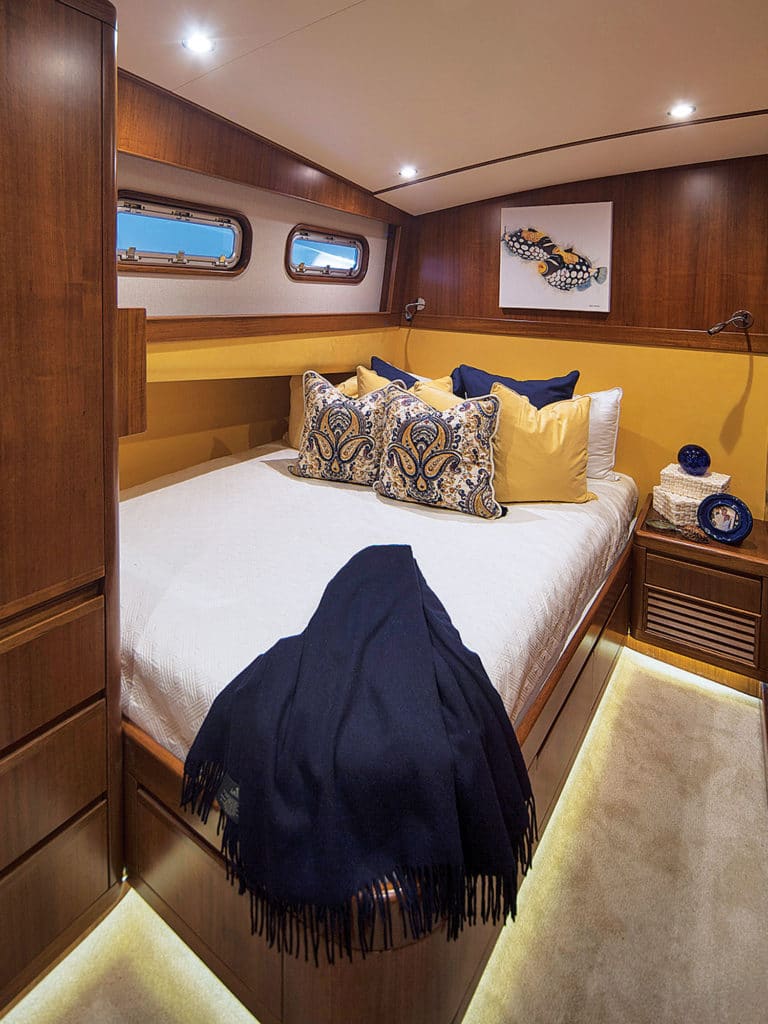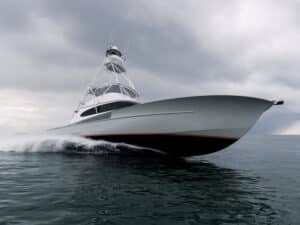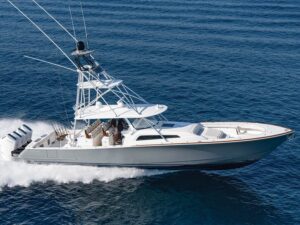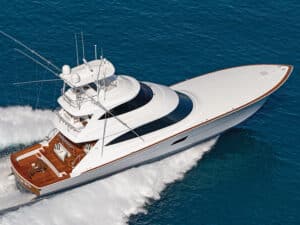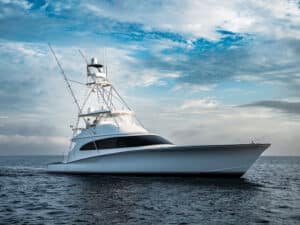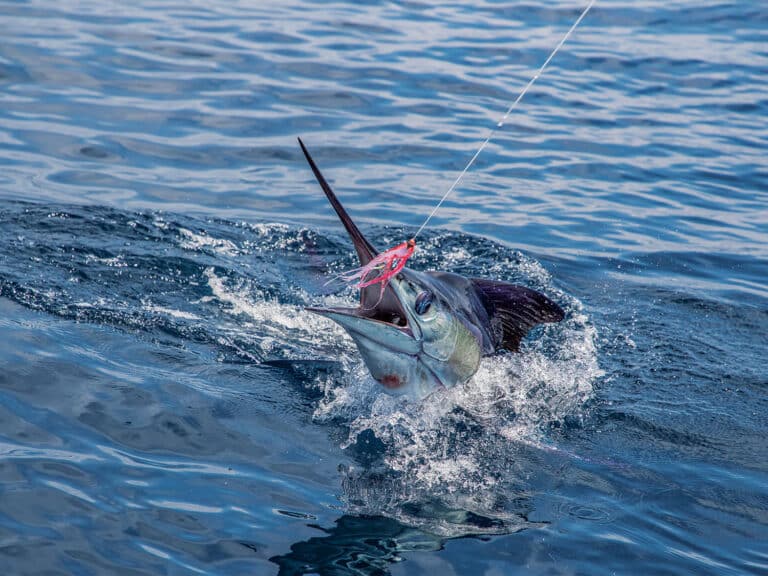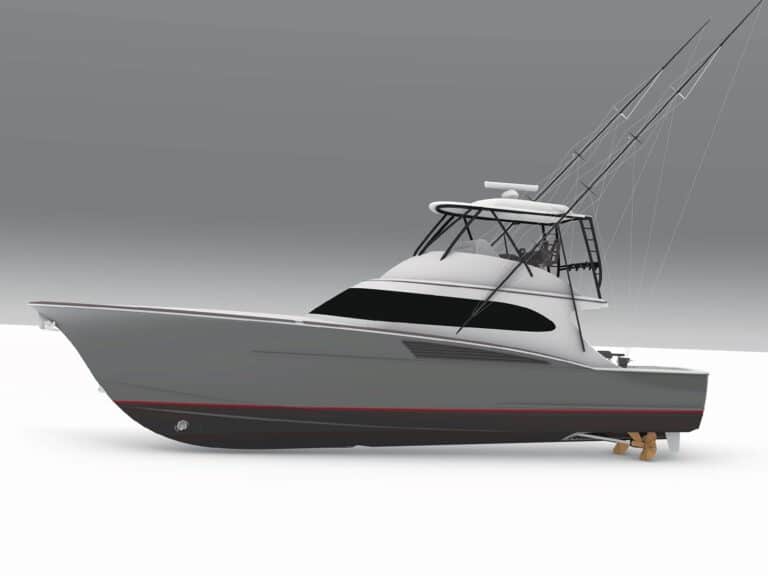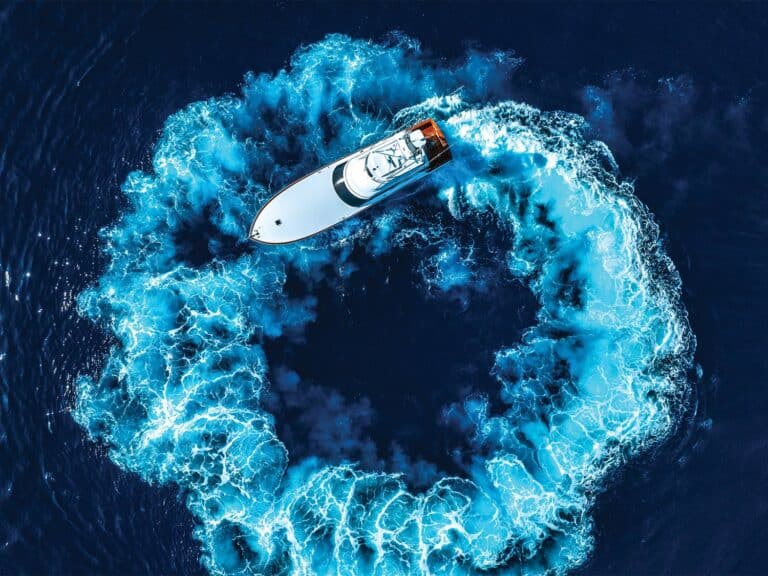I was headed back from the Bahamas when I got the call from John Vance, president of Jim Smith Tournament Boats, that the 60-foot walkaround Dona Re was ready. The summertime sailfish bite off Stuart, Florida, had picked up just a few days before, so we decided to put her through the paces and hopefully see her in action with a billfish behind the boat.
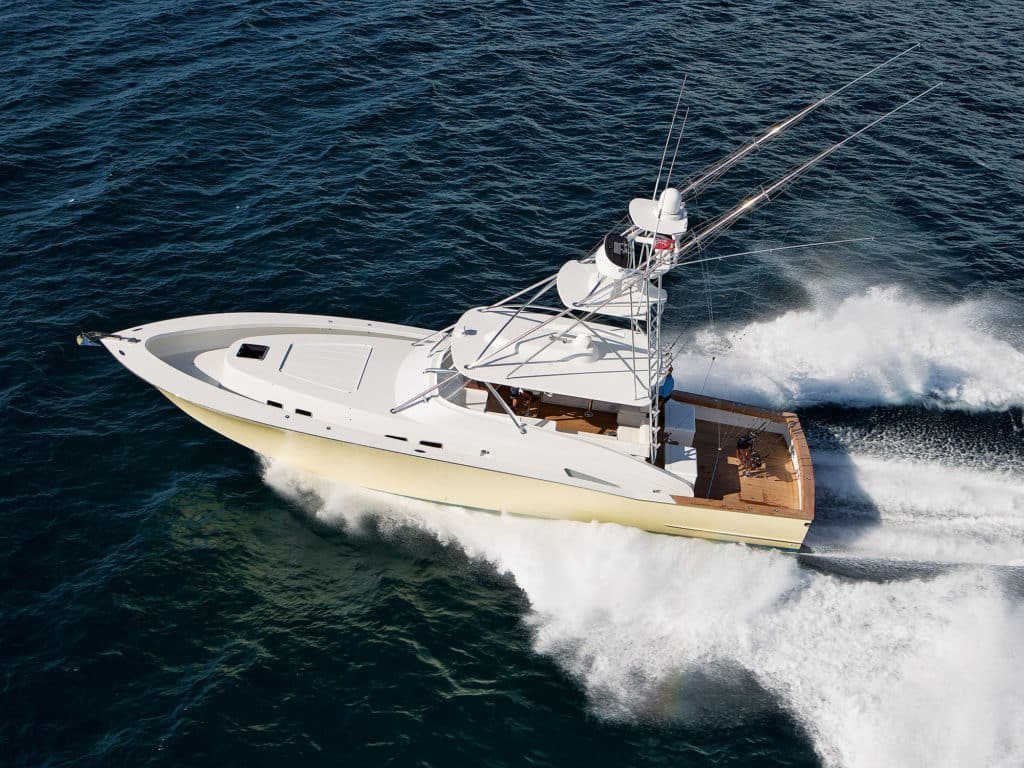
Fishability
Designed for an owner from São Paolo, Brazil, who loves vertical jigging nearly as much as chasing billfish, the 60-footer incorporates thoughtful features that allow everyone on board to enjoy their day offshore — not to mention the added benefits of 360 degrees of fishable space around the boat. “Dona Re is our first walkaround. We’ve done several expresses over the years, especially when they were big in the late ’80s and early ’90s, but they kind of went away. Now the walkaround seems to really be gaining popularity,” Vance describes.
We immediately put Dona Re to work catching sardines for bait. Perched high above in the Palm Beach Tower, Capt. Elliott Cline spotted bait popping on the surface as we pitched sabiki rigs into the schools from the bow. The ability to catch bait from the bow allowed us to fish well away from the whitewash, keeping the bait on the surface much longer. The pass-throughs on either side of the cabin allowed quick and easy access to the baitwell in the cockpit, even when two anglers passed on the same side of the boat.
The 40-foot outriggers from Rupp are anchored to the boat’s hardtop, allowing an angler to fight a hot fish around the boat without the need to duck under deployed outriggers. While we didn’t find any sailfish during our quick four-hour trip offshore, the benefits of Dona Re‘s design — especially when fishing from a dead boat on the drift — were immediately evident when we were hooked into multiple bonito at once and were able to fight them from anywhere on the boat.
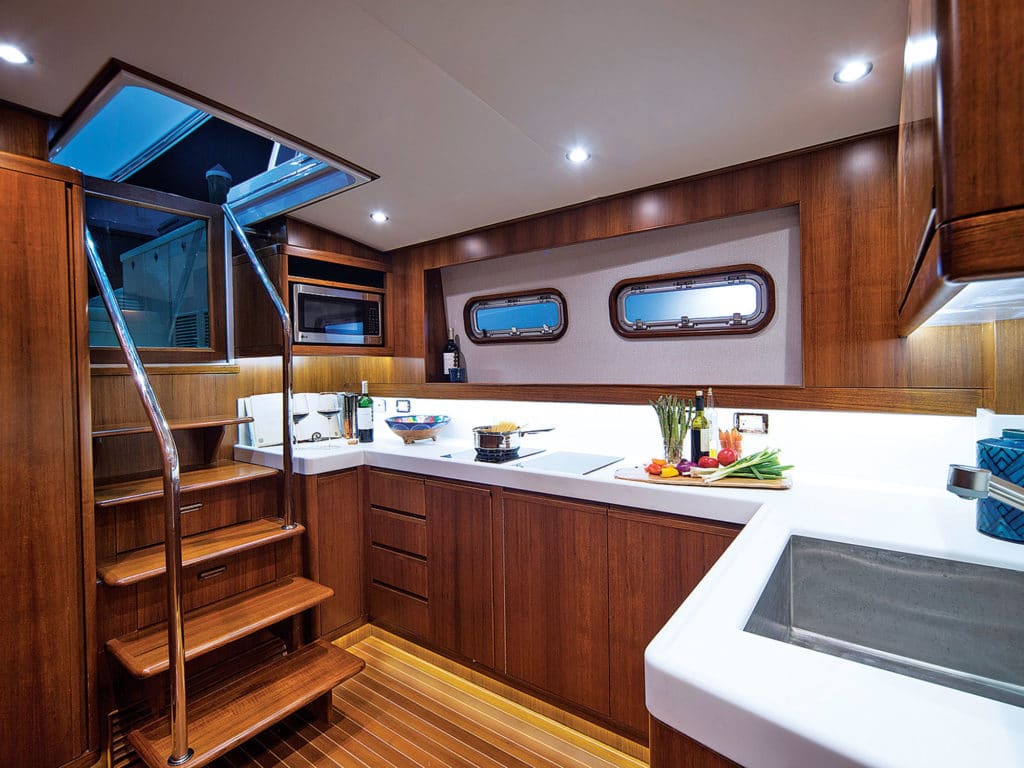
Bridge and Cockpit
A Bluewater fighting chair in the middle of the cockpit means business, but the expansive cockpit still has plenty of room on all sides for a mate to work with a billfish on the wire. A giant fish box fed by an Eskimo ice maker is located on the starboard-side, with the large livewell located in the same position on the port side.
Rather than a traditional mezzanine, a bait station with a small sink and loads of tackle storage is located to port of the stairs, and a large freezer mirrors it on the starboard-side. Vance and his team added a remote set of throttle controls that can be moved throughout the cockpit to control the boat while bottomfishing. A separate 12-inch Garmin display is located on the starboard-side, perfect for watching bottom contours from the cockpit when deep-dropping.
Without a full settee down below, the air-conditioned bridge on Dona Re becomes the center of the action, and it can be fully enclosed when running in rough weather or back at the dock. The settee on the starboard-side wraps around a gorgeous table, while the backrests on the aft portions of the settee on both sides of the stairs have two mounting locations: One faces forward for running or hanging out at the dock, and the other allows anglers to face aft and watch the baits in the spread. The overall setup creates a two-tier mezzanine with the ability to sit in the cockpit to be close to the rods or sit back and watch the action from above on the bridge.
At the helm, Vance and his team outfitted Dona Re with three 16-inch Garmin displays behind a custom dash with tinted glass. All radios, switches and other controls are hidden under a flip-up console to starboard, which blends beautifully with the rest of the teak helm and accents found throughout the bridge.
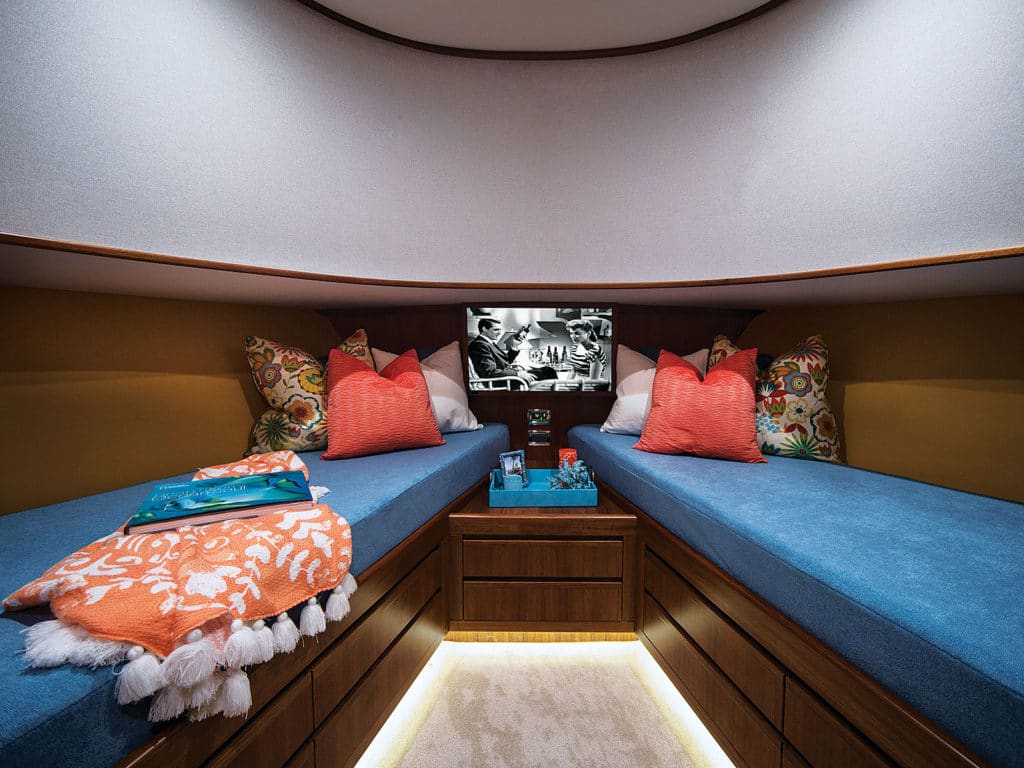
Accommodations
The living space below is a simple yet efficient use of space, considering the walkaround design; it is accessed down a set of stairs to port of the helm. The master stateroom is located aft on the starboard-side. An oversize head adjoins the master stateroom, with plenty of closet space and storage throughout. An identical head is located on the port side for guests, and a V-berth forward provides additional sleeping and storage space. A simple galley on the port side features custom refrigeration, a two-burner cooktop and a microwave oven.
Engine Room
The stairs in the cockpit lift up to reveal access to the large engine room below, which houses the pair of 1,250 hp MTU 8V Series 2000 diesels tied into ZF550 A transmissions. There’s plenty of headroom, with ample space for two or three people to work on any of the systems. The electric distribution panel is located forward of the engines on the centerline and above the Seakeeper 9 gyro, with the refrigeration compressors to the port side. The 1,200-gallon-per-day Dometic Sea Xchange watermaker and the Kidde fire-suppression system sit aft of the engines on the port side. The 22.5 kW Onan generator is in the same position starboard.
Although we had nice weather offshore, the benefits of the Seakeeper were quickly felt when Cline activated it from the bridge. “The gyrostabilizer on this boat is really dramatic in that the boat inherently is stable with a low center of gravity,” comments Vance. “And when the gyro is activated, it will allow the captain to remain in the tower in 3- to 5-foot seas. That factor will make people give this style of boat a second look.”
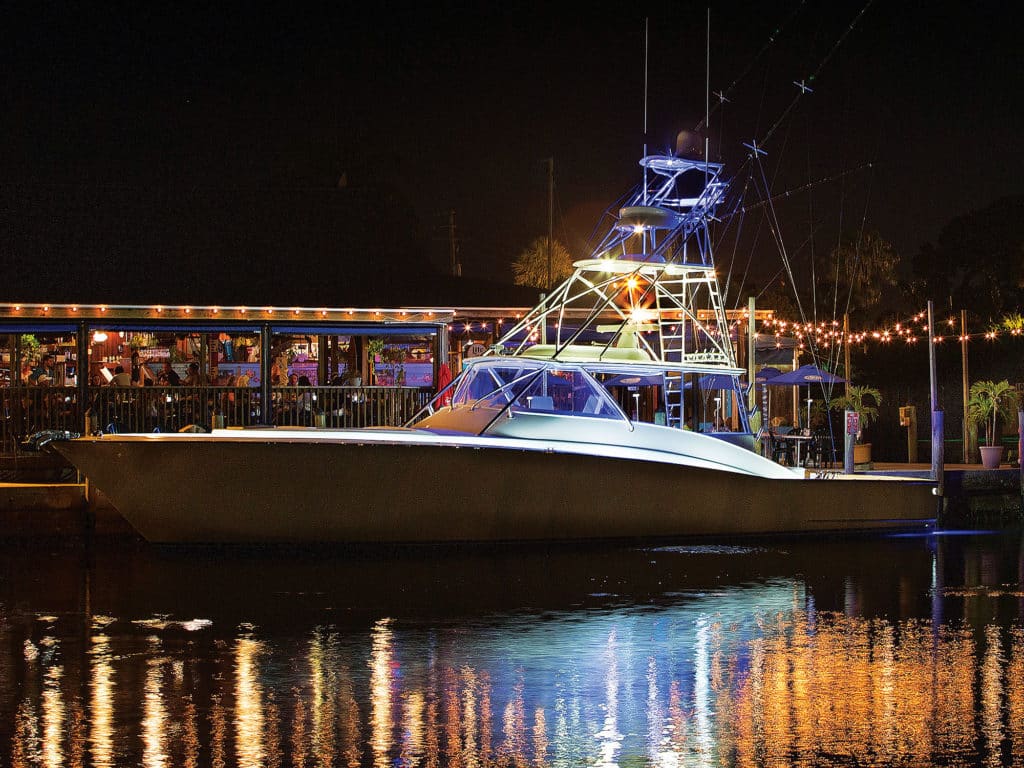
Construction and Design
Like other Jim Smith builds, Donald Blount and Associates designed Dona Re‘s cold-molded hull with performance and efficiency in mind. “We’ve been building boats like this for the last 30 years, with Douglas fir stringers fore and aft, okoume plywood bulkheads and African mahogany in the bottom. We go to composites in the deckhouse, floor, structures and furniture,” Vance notes with pride. Fernando de Almeida Yacht Design designed the layout of the boat and incorporated unique features with both offshore fishing and cruising in mind.
Performance
Following the distinct lineage of other Jim Smith boats, Dona Re got up on plane quickly. The 60-footer reached an economical cruising speed of 33 knots at 1,850 rpm and touched just over 40 knots on the pins. She was extremely responsive when backing down, and although we were in relatively flat seas, the stern stayed high, with very little water coming over the transom. When discussing performance with Vance, he noted: “A lot of owners may want to put more horsepower in this boat. If you opted for the 12-cylinder [MTUs], you’d see a top-end of more than 45 knots. I’m very comfortable at 40 knots, though — that’s just fine with me!”
The jury is still out on whether the walkaround will be a perennial design for years to come. But one thing’s for sure: If they keep turning out like this one, walkarounds will become a staple in both South Florida and other billfish hot spots around the world.
